
As Steve Jobs famously said, “Innovation distinguishes between a leader and a follower.” Innovation not only distinguishes individuals, it differentiates peoples and nations.
“Thought leaders” hold forth on innovation, tech industry leaders talk about it constantly. If you haven’t read a hundred quotes about innovation you’re likely leading a sheltered life.
Imagination is not only the uniquely human capacity to envision that which is not, and therefore the fount of all invention and innovation. As the writer J.K. Rowling puts it, “Innovation is arguably most transformative and revelatory capacity, it is the power to that enables us to empathize with humans whose experiences we have never shared.”
When one speaks of innovation, our thoughts immediately go to the icons of Silicon Valley, the Steve Jobs, Bill Gates, and Mark Zuckerberg’s of this world. We look to the tech industry to be our innovative engine.
But new theories are challenging this assumption. Increasingly, however, economists and social thinkers are challenging the conventional wisdom on innovation. Speaking at the Institute for New Economic Thinking conference in Toronto, Mariana Mazzucato, a professor at the University of Sussex, described the most notable technology innovations as coming from the government, not the private sector.
Read more about this controversial new theory in this New York Times article here:
How do we humans “do” innovation? It is a question that intrigues most of us. I’ve written about this in previous blogs on this website and many others have too (for example, Walter Isaacson in his best-selling book, The Innovators, discussed in detail on my blog here: http://georgegaldorisi.com/a-digital-tomorrow)
Isaacson’s book focuses on the kind of technology innovation that led to what Silicon Valley delivers to us today. But most know there is another deep pocket of innovation. It comes from those who specialize in “Life Imitating Art.” It comes from Hollywood
In his review of Brian Glazer and Charles Fishman’s book, A Curious Mind, Philip Delves Broughton takes us deep inside that world. Here is just a snippet of what he says:
For the past 30 years, the Hollywood producer Brian Grazer has been holding what he calls “curiosity conversations.” Twice a month (on average), he meets with scientists, politicians, writers, athletes and all sorts of other people to pick their brains, sometimes to inform a particular project but usually just to fill up the reserves of information, stories and relationships that any great producer needs.
Mr. Grazer, who amply credits his co-author, the journalist Charles Fishman, writes with a well-earned swagger. He doesn’t try to hang his case for curiosity on some dimly grasped shard of neuroscience or psychological research. The main proof of its value is his own success. Yet having an interest in the people and world beyond our experience, he argues, is worth far more than the business world’s barren spins on innovation and creativity.
More on this book here:
http://www.wsj.com/articles/book-review-a-curious-mind-by-brian-grazer-and-charles-fishman-1429051612

For most of the post-World War II era, the United States dominated potential adversaries with technology that was leaps and bounds ahead of any potential foe. This lead has shrunk or completely disappeared. Now the Pentagon is looking to the innovation center of our nation – Silicon Valley – for cutting-edge innovation.
Recently, the Pentagon issued a formal request for new ideas. Soon after, out of concern that the call for fresh thinking would not reach past the usual Washington contractors, Stephen Welby, the deputy assistant secretary of defense for systems engineering, visited a dozen Silicon Valley start-ups that are pursuing new technologies that the Pentagon believes might have a national security role beyond the next dozen or so years.
Innovation for the military is nothing new to Silicon Valley. The region has a long history of military work. During the 1960s and ’70s, Silicon Valley was dominated by aerospace and military contractors such as Lockheed Missiles and Space Company and FMC Corporation. It was also the center of the nation’s electronic warfare industry.
Read more here
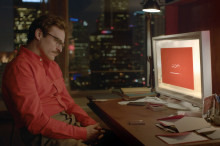
An iconic film of the last century, Stanley Kubrick’s 2001: A Space Odyssey had as its central theme the issue of autonomy of robots. Few who saw the movie can forget the scene where astronauts David Bowman and Frank Poole consider disconnecting HAL’s (Heuristically programmed ALgorithmic computer) cognitive circuits when he appears to be mistaken in reporting the presence of a fault in the spacecraft’s communications antenna. They attempt to conceal what they are saying, but are unaware that HAL can read their lips. Faced with the prospect of disconnection, HAL decides to kill the astronauts to protect and continue its programmed directives.
While few today worry that a 21st-century HAL will turn on its masters, the issues involved with fielding increasingly autonomous unmanned systems are complex, challenging, and increasingly contentious. Kubrick’s 1968 movie was prescient. Almost half-a-century later, while we accept advances in other aspects of autonomous vehicle improvements such as propulsion, payload, stealth, speed, endurance, and other attributes, but we are still coming to grips with how much autonomy is enough and how much may be too much.
Recently, Stephen Hawing had this to say: “The development of full artificial intelligence could spell the end of the human race.
But does artificial intelligence threaten our species, as the cosmologist Hawking suggested? Is the development of AI like “summoning the demon,” as tech pioneer Elon Musk told an audience at MIT? Will smart machines supersede or even annihilate humankind? It is a pressing issue for many of us today. What do you think?
Read more here a tech-startup pioneer and someone who has studied this issue intensely
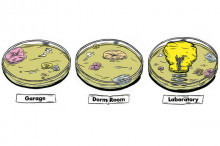
What is happening to innovation in America?
Silicon Valley, where toddler-aged companies regularly sell for billions, may be the most vibrant sector of the U.S. economy, fueling a boom in markets from housing to high-end toast (how many $4-a-slice artisanal bread bars does a place really need?). But as recent innovations — apps that summon cabs, say, or algorithms that make people click on ads — have been less than world-changing, there is a fear that the idea machine is slowing down. And while Silicon Valley mythology may suggest that modern-day innovation happens in garages and college dorm rooms, its own foundations were laid, in large part, through government research. But during the recession, government funding began to dwindle. The federal government now spends $126 billion a year on R. and D., according to the National Science Foundation. (It’s pocket change compared with the $267 billion that the private sector spends.) Asian economies now account for 34 percent of global spending; America’s share is 30 percent.
But in the past few years, the thinking has changed, and tech companies have begun looking to the past for answers. In 2010, Google opened Google X, where it is building driverless cars, Internet-connected glasses, balloons that deliver the Internet and other things straight out of science fiction. Microsoft Research just announced the opening of a skunk-works group called Special Projects. Even Bell Labs announced this month that it is trying to return to its original mission by finding far-out ways to solve real-world problems.
Read the entire article here:
http://www.nytimes.com/2014/06/15/magazine/silicon-valley-tries-to-re-make-the-idea-machine.html
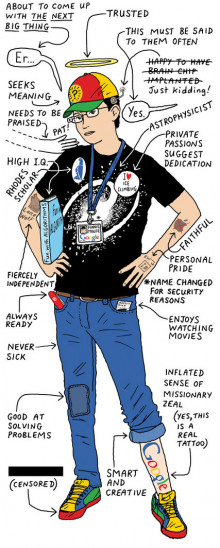
One of the most powerful companies is vigilant about keeping its secrets. But you can look behind the scenes thanks to Brad Stone’s thoughts on “How Google Works.” He provides a revealing look at who these people are. It also gives you an impressive leg up if you want to work for a company like Google – or start the next Google:
At the center of their new management framework are “smart creatives”: those unusually intelligent, self-motivated employees who are responsible for coming up with the next big thing. Companies need to hire and keep them, but smart creatives aren’t necessarily dazzled by perks like high salaries and corner offices. They seek meaning in their work and approach their careers with an inflated sense of missionary zeal that would send the writers of HBO’s “Silicon Valley” scurrying for their notebooks. Successful companies must start thinking about their culture early on, the authors write, and fashion direct, inspiring mission statements (“Don’t be evil”) that might sound disingenuous to outsiders but that actually motivate employees.
Most of these lessons have hardened into conventional wisdom and will not surprise anyone already steeped in Silicon Valley’s infectious dogma. Trust your engineers and say yes to them as often as possible. Stay flexible in planning. Power should derive from merit and insight, not tenure or salary. Launch quickly, iterate and don’t be afraid to fail.
Read more here
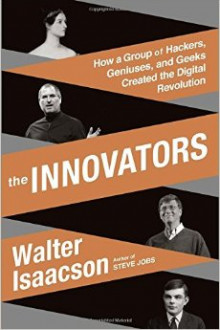
You don’t need to work in Silicon Valley or be an MIT grad to know that innovation is the primary source of competitive advantage for individuals, for companies and even for countries. For those of us in the United States, innovation seems to have been part of our DNA for a long time – a fact recognized even by those who don’t admire us.
Many people write about innovation – some well and some not-so-well. One of my favorites is Walter Isaacson. Three years ago he penned the best-seller Steve Jobs, which gave us a never-seen-before window into the life and work of man who many consider the most innovative genius of the last half-century – and perhaps longer.
Now, Isaacson has delivered another gem, simply titled The Innovators. I enjoyed it immensely and it has also achieved best-seller status. Here is some of what the New York Times review of The Innovators had to say:
As the book gallops forward, Mr. Isaacson must combine the good, the great and the ugly. They all figure in the story of the transistor, which featured William Shockley, the scientist who first saw the potential in silicon and became a Silicon Valley pioneer — but is now remembered for the racist theories that clouded his legacy. His work on the semiconductor, with two powerful collaborators, would never have led to such household popularity had there not been a Steve Jobs-like figure (Pat Haggerty at Texas Instruments, who shared Jobs’ ability to sell products people had no idea they wanted) to put these brand-new devices, now called transistors, into radios, and truly rock the American teenager’s world.
Read the entire review here…and read the book…it may inspire you to be your most innovative self!

Are Silicon Valley at Odds – or have they found common ground. The chief technology officer of the United States and former Google executive talks with Susan Dominus about why more techies should consider Washington — in spite of the BlackBerrys.
Read more here
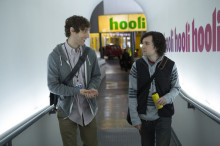
Do you remember when “geeks” were unpopular? That seems like ages ago. Now these geeks are the new rock stars.
Hollywood loves rags-to-riches stories, including its own, in which waitresses turn into movie stars. That most American of story lines has moved to Silicon Valley as it overshadows the entertainment industry as a center of power and money. Filmmakers are flocking north in search of material. When Facebook spends $19 billion to acquire WhatsApp, or the two founders of Snapchat turn down $3 billion in cash to sell their company, people pay attention—and feel ambivalent about the whole dynamic.
In movies and on television, techies long functioned as a two-dimensional plot device—socially inept computer nerds who help save the day (or wreak havoc) with a flurry of keystrokes. Now, there’s a new geek in town. The stock character with the horn-rimmed glasses and bad haircut has been replaced by the fresh-faced app designer who becomes an overnight billionaire.
Read more here
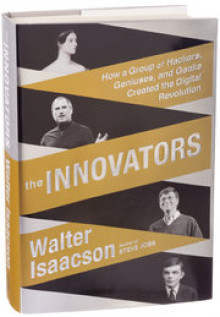
Few writers have taken us on a more exciting deep-dive into technology – and especially technology’s future – than Walter Isaacson. His last book, Steve Jobs, was a runaway best-seller. Now, his newest book, The Innovators, promises more of the same. Here is what Janet Maslin had to say in Books of the Times.
Walter Isaacson, a versatile and workmanlike author, has never sounded as excited by his material as he does in “The Innovators.” It may be that he has the same basic qualifications as many of the people he writes about here: “My father and uncles were electrical engineers, and like many of the characters in this book, I grew up with a basement workshop that had circuit boards to be soldered, radios to be opened, tubes to be tested, and boxes of transistors and resistors to be sorted and deployed.”
Read more here










